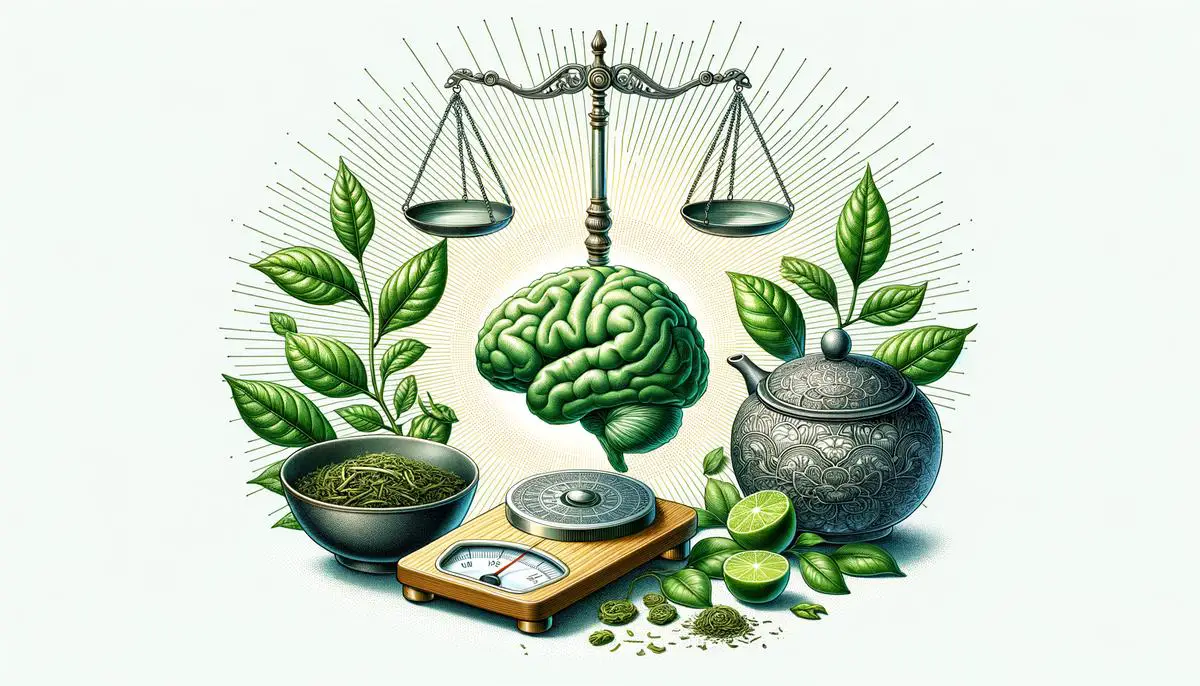Green tea, with its verdant embrace, has long been a cherished ally in our quest for health and well-being. This gentle brew, steeped in history and tradition, carries within its leaves a powerful blend of antioxidants, offering a beacon of hope against the relentless tide of modern-day health challenges. As we journey through the narrative of green tea, we uncover the layers of its benefits, from bolstering heart health to enhancing mental clarity, and even playing a pivotal role in weight management and cultural heritage. Let us tread softly into the world of green tea, where each sip promises a fusion of healthful vigor and serene tradition.
The Antioxidant Properties of Green Tea
Green tea’s secret weapon against everyday health skirmishes lies in its abundant antioxidants, catechins and polyphenols, standing at the frontline. These compounds dive headfirst into the battlefield of the human body, targeting oxidative stress and inflammation, two notorious culprits behind many chronic diseases. Picture this: when we breathe, exercise, or even digest food, our bodies produce free radicals, small unstable molecules craving electrons from healthy cells, leading to oxidative stress.
Enter green tea’s catechins, especially epigallocatechin gallate (EGCG), reputed as one of the most potent antioxidants discovered. These antioxidants donate an electron to free radicals without becoming destabilized themselves, thereby halting a potential chain reaction of cell damage. It’s akin to applying a soothing balm on a burn. Consequently, this antioxidant action of green tea assists in lowering the risk of heart disease. Studies show how these antioxidants can enhance heart health by improving blood flow and lowering cholesterol.
Moving on to another battlefield, inflammation, which is our body’s natural response to injury or infection, can become a chronic tenant if not properly managed. Chronic inflammation is like a slow-burning fire in the body that contributes to conditions such as arthritis, diabetes, and cancer. Green tea’s antioxidants act as firefighters to this blaze. Research underscores how catechins reduce inflammatory markers in the body, soothing flames and protecting it from getting out of control.
On a cellular level, green tea’s antioxidants fortify cells’ defenses. They guard DNA from damage through their interactions with harmful molecules, preserving cell vitality and curbing cancerous growths. It’s a gentle whisper to our cells, reminding them of their strength and resilience.
Strolling further down this path of discovery, imagine the antioxidants in green tea like brave soldiers protecting the kingdom of our body. Their relentless fight against invaders promising illness and aging, promotes longevity. Green tea drinkers often showcase lower risks of experiencing age-related diseases, hinting at the tea’s role in enhancing life expectancy.
It won’t stretch the imagination too far to appreciate the broad spectrum of green tea’s health benefits, rooted deeply in its rich antioxidant profile. From buffering against oxidative stress to cooling down inflammation fires, fortifying cellular defenses to promoting a longer, healthier life — the humble cup of green tea carries a plethora of strategies for well-being within its leaves.
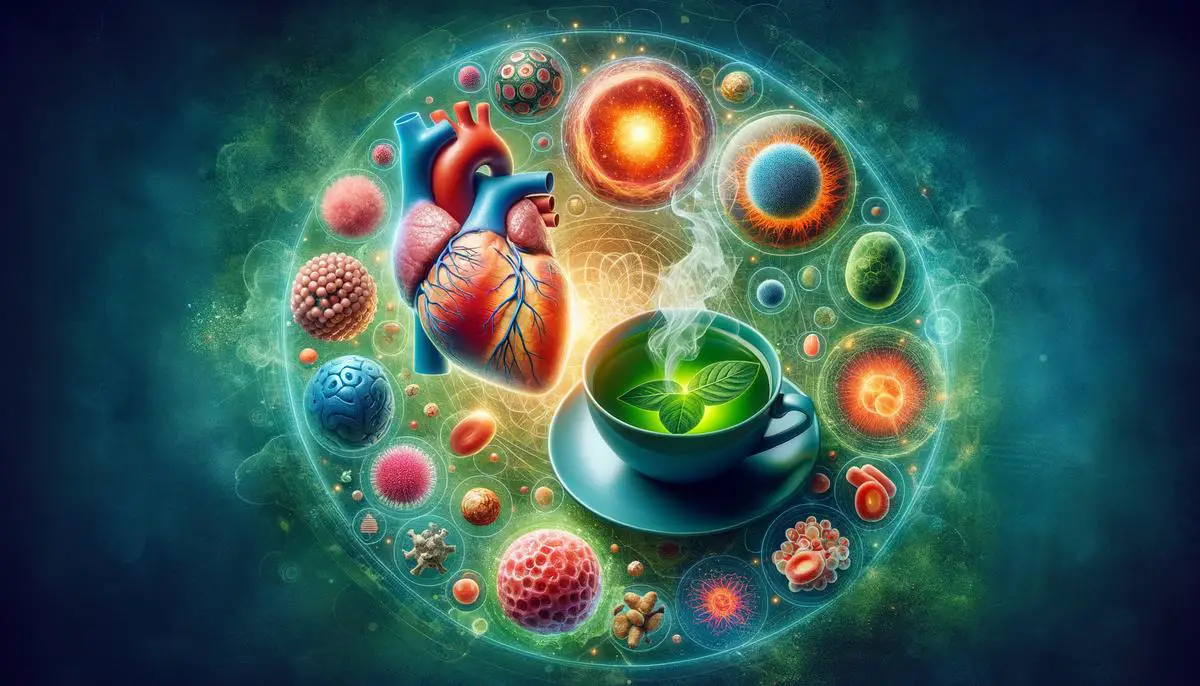
Green Tea and Mental Clarity
Green tea packs a punch not just with its antioxidants, but also with L-theanine, an amino acid, and a moderate amount of caffeine. L-theanine has a unique role in brain health, promoting relaxation without drowsiness, a somewhat Holy Grail in the fast-paced modern world. When paired with caffeine, which is well known for its stimulant effects, the combination becomes a powerful cognitive booster. This duo has been found to notably improve attention and problem-solving skills, offering a sharp yet calm mental state ideal for productivity.
Moreover, these compounds interact to fine-tune brain function, enhancing faster reaction times, boosting auditory and visual information processing speeds, and supporting memory recall. Such effects are not just fleeting benefits; they contribute to long-term cognitive health.
The neuroprotective properties of green tea extend to its potential in fighting off the development of neurodegenerative diseases such as Alzheimer’s and Parkinson’s. Studies indicate that regular consumption of green tea may slow down the progression of these conditions, possibly owing to its bioactive compounds like catechins, which help in preventing brain cell damage and promoting cell regeneration.
In addition to supporting cognitive functions and mental clarity, green tea has a positive effect on mood and stress levels. This is again credited to L-theanine, which increases the brain’s alpha wave activity. Such activity is linked to a state of calm alertness and plays a crucial role in reducing stress, fostering a more positive mood.
The benefits of green tea for mental health are multifaceted, including improvements in mood, protection against age-related cognitive decline, and enhanced focus and alertness. Its compounds work in synergy to not only provide immediate mental clarity but also contribute to the long-term health of the brain.
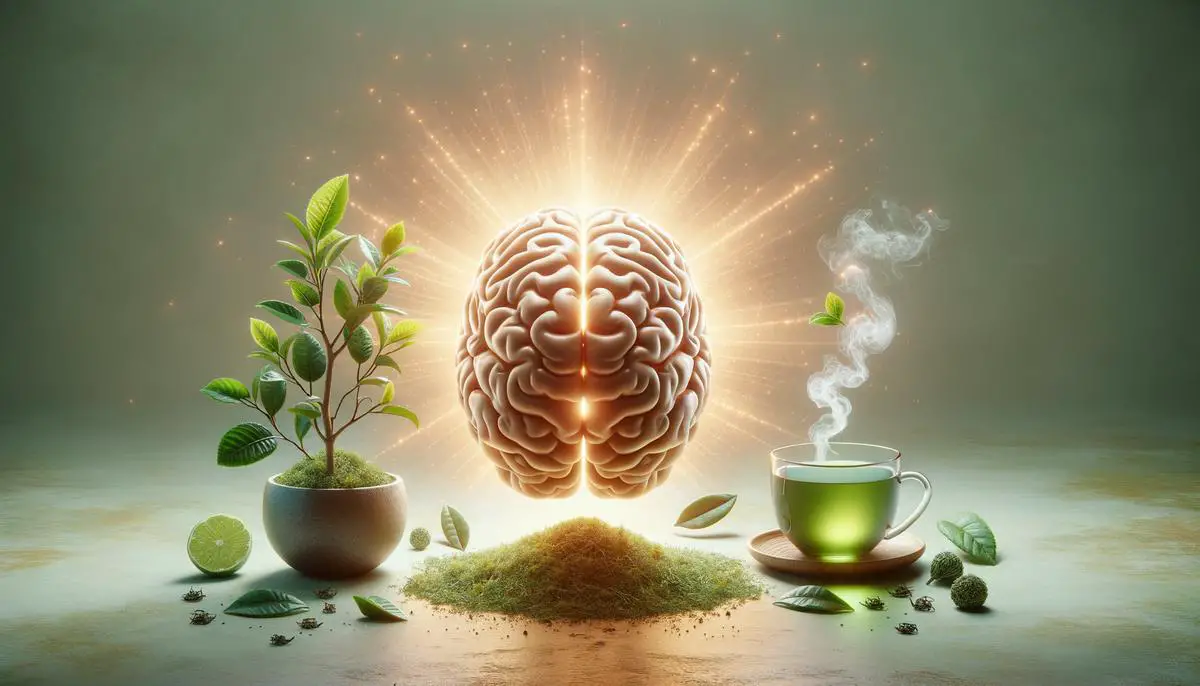
Green Tea’s Role in Weight Management
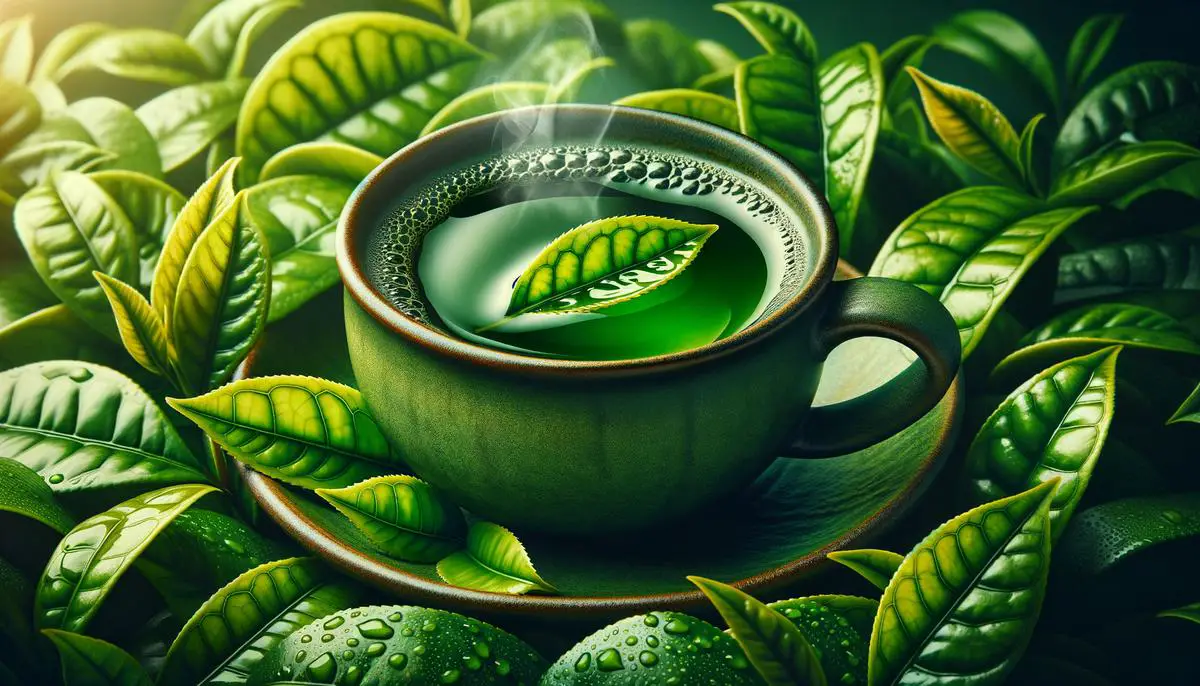
The Cultural and Historical Significance of Green Tea
Steeping beyond health, green tea unfolds a vivid chronicle of cultural significance that traverses continents and centuries. Its origins, deeply rooted in ancient China, narrate tales of emperors and zen monks, where it was revered not merely as a beverage but as a serenade to mindfulness and harmony with nature. This veneration of green tea sparked rituals that intricately wove the fabric of societies, influencing not just daily habits but also forging a ceremonial bond among people across Asia.
The legendary Emperor Shennong of China is often credited for the discovery of green tea around 2737 BCE, when a fortuitous breeze swept leaves into his boiling water, birthing the world’s enduring affair with this verdant brew. This anecdote, nestled in the heart of folklore, underscores green tea’s ascension from a serendipitous find to a cornerstone of Chinese medicine and culture. It was not just a drink but a symbol of enlightenment, purity, and the quintessential essence of the natural world.
In Japan, the narrative deepened with the advent of ceremonial tea rituals, particularly the Chanoyu or Japanese Tea Ceremony, which blossomed in the 15th century. This practice transcended the physical act of preparing and consuming tea, embodying a philosophical journey emphasizing harmony (和), respect (敬), purity (清), and tranquility (寂). The meticulously choreographed ceremony mirrors Zen Buddhist principles and serves as a meditative practice, underlining green tea’s role in elevating spiritual and communal connection.
Furthermore, the art and culture surrounding green tea flourished as well. The craft of traditional Japanese tea bowls and the austere beauty of tea gardens are tributes to the central role green tea played in artistic expression. Nurtured by the Zen axiom of finding beauty in simplicity and transience, the realm of green tea furthered an aesthetic appreciation of understated elegance and impermanence.
These cultural practices surrounding green tea unraveled across the globe, forging an indelible mark on societies beyond its Eastern origins. From China and Japan, green tea seeds sailed across oceans, taking root in lands far and wide, becoming a global phenomenon. This passage brought about more than just a diffusion of agricultural practices; it was the proliferation of a story—a story that intertwines humans with nature, and with each other.
Its consumption inspires dialogue, whether it’s in the calm of a morning ritual or part of a festive tradition, reveling in the language of warmth and wellness. Green tea has manifested itself not only as a marker of social status and luxury in certain epochs but also as a democratized drink accessible to the masses, reflecting societal values and changes throughout history.
Green tea’s influence further permeates literature, with poems and texts celebrating its virtues, paralleling it with philosophical reflections about life, simplicity, and mindfulness. This literary tradition showcases how green tea simmered into the collective consciousness of various cultures, symbolizing serenity and an artful way of living.
As green tea continues to be savored by an ever-expanding mosaic of cultures worldwide, it retains its timeless allure, telling stories of past empires, echoing through the ages in every sip. It transcends its healthful properties to represent a bridge between tradition and modernity—a living relic that encapsulates a complex heritage of human civilization, mindfulness, and community bonding. Thus, green tea stands not merely as a drink but as a cultural artifact that bridges past and present, inviting every consumer into a shared tapestry of human history and heritage.
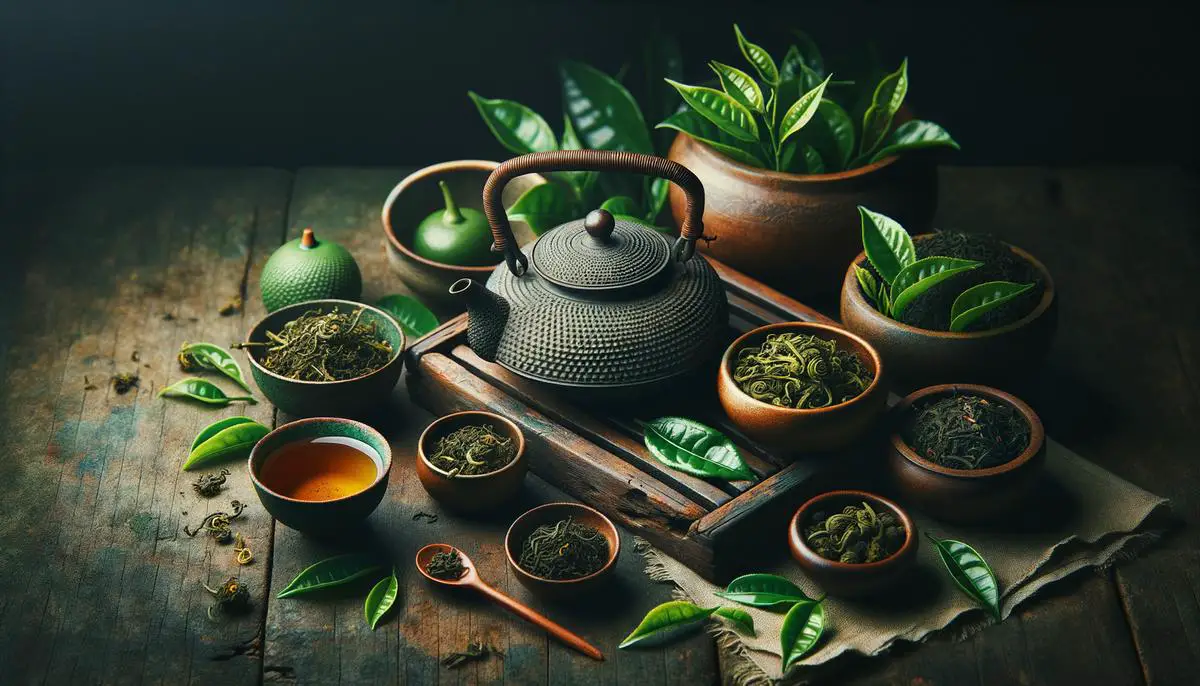
In the tapestry of health and wellness narratives, green tea emerges as a protagonist, weaving together threads of ancient wisdom with contemporary science. At its core, the most compelling attribute of green tea lies in its profound antioxidant capacity, a gift to our bodies in their ceaseless battle against oxidative stress and inflammation. This singular virtue stands as a testament to green tea’s enduring legacy as not just a beverage but as a vital companion in our pursuit of health and longevity. As we savor each cup, let us remember that within its subtle flavors lies the strength to protect, heal, and nurture our well-being.
